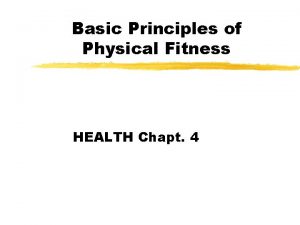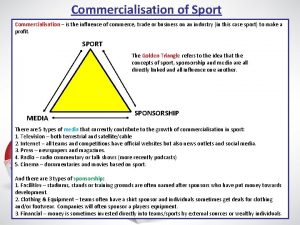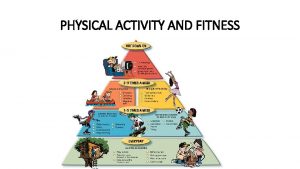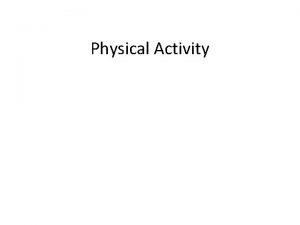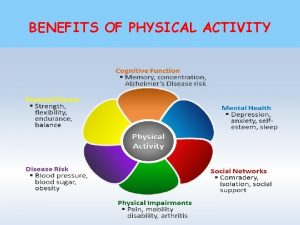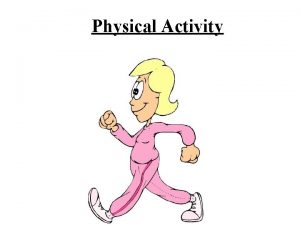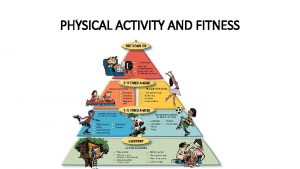3 2 2 2 Commercialisation of physical activity





























- Slides: 29

3. 2. 2. 2 – Commercialisation of physical activity and sport Learning objectives To understand the relationship between sport, media and commercialisation. To describe the types of media and sponsorship found in sport. To be able to describe the advantages and disadvantages of commercialisation in sport and the impact on players, the sponsors, the officials, the sport and the spectators. To understand the use of sports technology and discuss the positive and negative impact of such developments.

Commercialisation of sport Sport is now a global product. High-profile sports attract massive media interest and huge sponsorship deals. Watch me How is sport and business linked?

Commercialisation of sport Sport, media and commercialisation are closely linked in a what is known as a ‘GOLDEN TRIANGLE’ Commercialisation Sport Media Think. Pair. Share – What does this golden triangle illustrate?

Commercialisation of sport Each side of the triangle benefits from the other sides in some way; therefore, each side is dependent on the other sides in some way, normally either financially or for promotion. Sport uses media to gain viewers and businesses pay money to access a sports audience.

Types of sponsorship Depending on the sport, team or athlete involved, the sponsorship can run into millions of pounds, but only for the best competitors in the most popular sports! Here are three types of sponsorship in sport: Facilities (stadiums and grounds) - New stands or grounds will often be named after the sponsor who has put money towards the development. Clothing and equipment - Teams usually get a shirt sponsor and often individual players will get deals for footwear. Companies will often sponsor a players equipment, usually one of the companies who manufacture the equipment. Financial – money may be invested into teams or sports by external sources or wealthy individuals.

Types of media Media coverage of sport is widespread. By listening to commentators, pundits and watching replays we improve our knowledge and understanding. There are 5 different media outlets each contributing to the growth of commercialisation in sport. TV and Radio - Live matches and commentary can be found through TV and radio services. There also highlights shows and documentaries about sports. Internet - All teams and major athletes have their own websites where you can find all kinds of information about the team/athlete/matc hes Newspapers/Pre ss - Print predictions and results, as well as articles about athletes and clubs Social Media – nowadays social media is a popular outlet for news stories and individual accounts of events.

Impact of Sponsorship Think. Pair. Share – What is the first thing you notice about these images?

Impact of Sponsorship Media coverage of sports and high profile performers lead to huge sponsorship deals. Nike and other sports companies put large sums of money into commercial activity. Sponsorship of teams and individual players is a way of improving their brand/image. Think. Pair. Share – What athletes or teams do you think of when you think of Nike? Why is that?

Commercialisation This rise in commercialisation has almost become part of the modern game, but it is important to remember it has positive and negative effects on the sponsor, the sport, the players and the fans.

Commercialisation The performer: Advantages • Allows athletes to earn income as a full time job. • Performers gain maximum exposure to promote their personal brand. • Can lead to additional roles post playing career within the sport. • Relieves financial worries Disadvantages • Encourages deviant behaviour due to the pressure of success. • Generally, favours male over female and able bodied over disabled. • Sponsorship might be short term. • Performers may have to advertise a product that they do not like. • Performers might be contracted to put in appearances and attend public speaking.

Commercialisation The sport: Advantages • Raises the profile of the sport due to increased exposure. • Provides an increased level of funding to improve resources, coaching or facilities. • Gives the sport financial security for a period of time. • Attracts the best players in the world to that sport. Disadvantages • Commercialisation tends to support the popular sports leaving the ‘lesser’ sports to lose out. • Changes to the sport format and rules have being introduced to make the sport audience friendly. • The influence of TV has caused an increase in adverts and TV timings and lost some of sports traditions.

Commercialisation The official: Advantages Disadvantages • Offers a professional career and earn an income from officiating. • Media coverage leads to officials gaining a high profile. • Advancements in technology/better equipment/facilities which assists with decisions. • Bad decisions highlighted analysed by media. • Personal and sporting behaviour has to be controlled as the image of the sport, coaches and players are on view to the world. • Some sports get more funding and therefore officials are paid better. • Grass roots sport has more volunteer officials than elite sport

Commercialisation The audience/spectator: Advantages Disadvantages • Offers a wider choice of sports available to watch. • Viewing experience has ben enhanced due to investment into technology and audience participation. • Encourages spectating not participating. • Can become very expensive for fans/spectators. • Can affect view experience due to increased TV breaks and time outs.

Commercialisation The sponsor/company: Advantages • Sport can offer an excellent opportunity for the sponsor to promote a product/service to a widespread audience. • Advertising brand name. • Promote a caring attitude and increasing goodwill. • Tax relief Disadvantages • Poor behaviour from athletes/ clubs can cause negative press. • Smaller sponsors might struggle to compete with larger more global brands. • Some sponsors are not suitable to be promoted within sport. i. e. tobacco or alcohol. • Investing in teams and individuals can backfire if they do not achieve success i. e. teams not qualifying for major competitions.

Technology Advancements in technology have had both a positive and negative effect on the following people: Performer, sport, official, sponsor and the spectators. Watch me How has technology enhanced sport?

Technology 1. The performer Sports technology has helped the development of sports clothing and footwear e. g. football boots. Footwear is made of lighter material = faster movements and can create more power. Think. Pair. Share - How have football boots evolved?

Technology Next generation sports clothing has been created to help optimise conditions for performance (i. e. regulates temperature/oxygen delivery) New materials and design used in tennis rackets, skis, footballs, javelins, bicycles improve control, speed and distance.

Technology New designs and lighter material allow for more powerful shots and higher level of performance. Performers can use technology to produce outstanding performances for us to watch and admire. World records and amazing feats can be seen regularly. These developments should be able for all to ensure fairness. Too much technology can take away from performer ability and some advancements may be classed as cheating.

Technology 2. The audience/spectator Sports technology has provided spectators with better viewing experience and enhanced viewers knowledge and understanding. • 3 D and High definition T. V. has enhanced our viewing experience. • Hawk eye technology • New camera angles. i. e. Cricket stumps camera view • Formula 1 onboard radio conversions can be heard.

Technology Spectators viewing experience is enhanced with the use of special replays. Close up cameras make the audience feel a real part of the action. Replays that show controversial moments in the game can cause anger and frustration amongst the audience. Technology can also promote watching and not playing sport as well as encouraging watching at home rather than going to watch a game live.

Technology 3. The official The use of technology allow the correct decisions to be made by referees and officials. • Video replay systems or instant reviews (hawk eye) • Goal line technology in football

Technology Help make the correct decisions and ensure fairness. Take the pressure off having to make a decision and can ease the tension of players and spectators. Takes away a part of the referees job and can undermine decisions made.

Technology 4. The sport Introduction of technology into the sport itself can make it more interesting and attract a larger audience and in turn bigger sponsorship deals. 5. The company/sponsor Research and technology developments for the company manufacturers can be lucrative in terms of product sales and consumer usage. i. e. lucozade sport drinks.

Apply it! What has stuck with you? What is meant by a ‘golden triangle’? Explain the advantages and disadvantages to spectators of an increased commercialisation in sport? Commercialisation in sport Compare the advantages of commercialisation for the sponsor and the performer? Discuss the positive and negative impacts of technology for officials in tennis (hawk eye)

Practice it! Exam questions 1. According to research, some sports have higher participation rates than others. Explain two ways in which the media can help to increase participation in sport. (2) 1. . . . . . . 2. . . . . . .

Practice it! Exam questions 2. State three types of sponsorship an individual may receive. (3) 1. 2. 3.

Practice it! Exam questions 3. Sponsors and the media pay huge sums of money to be linked to elite performers and to cover major sporting events. In 2012, the golfer Rory Mc. Ilroy signed a 10 year sponsorship contract with the sports company Nike, reported to be worth over £ 150 million. (a) Explain the reasons for companies investing such large sums of money in sport. (3) (b) Sky Broadcasting and BT currently pay £ 3. 2 billion for the media rights of Barclay’s Premier League. Outline the disadvantages to a sport of increased media control. (4)

Practice it! Marks Scheme: 1. Any two from: Media increases profile of sports through broadcasting/advertising to a greater number of people (1), therefore more people become aware of the sport/want to play the sport (1). Media provides funding for the sport (through payment for coverage) (1), therefore sport can develop at grassroots allowing more people to participate (1). Media increases people’s knowledge of sports, which raises awareness (1) so that they want to play the sport/more people know how to play the sport (1) 2. Clothing / footwear (1) Equipment (1) Facilities (1)

Practice it! Marks Scheme: 3. (a) A. Raise awareness of brand/increased publicity/Increase sales of their products/brand becoming more fashionable. B. Linked to sport with good image/improve company image/link to excellence/improve community involvement/improve public relations. C. Opportunity for corporate hospitality/entertain clients. D. Improve company morale/employees feel linked to success of sport. E. Tax relief for sponsoring companies. (b) A. Traditional nature of the sport changes/new competitions/formats introduced /rules/ regulations/ scoring systems altered/clothing/uniforms changed /breaks in play. B. Playing times altered/playing seasons altered. C. Location of events may be influenced by commercial considerations. D. Ticket allocations given to sponsors not fans. E. More popular sports gain more coverage at expense of minority sports. F. Media can direct public opinion/support about sport or event/over sensational negative events eg deviancy. G. Fewer viewers for some sports due to pay-per view/ subscription channels. H. Lower attendance at events that are televised.
 Disadvantages of commercialisation in sport
Disadvantages of commercialisation in sport Physical fitness components and tests grade 9
Physical fitness components and tests grade 9 Advantages and disadvantages of commercialisation in sport
Advantages and disadvantages of commercialisation in sport Commercialisation in sport definition
Commercialisation in sport definition Ei commercialisation fund
Ei commercialisation fund Reactants products and leftovers
Reactants products and leftovers Debye huckel limiting law
Debye huckel limiting law Activity on node vs activity on arrow
Activity on node vs activity on arrow Form content and use
Form content and use Activity 1 activity 2
Activity 1 activity 2 Activity 2
Activity 2 1index
1index Objectives of physical education
Objectives of physical education Global strategy on diet physical activity and health
Global strategy on diet physical activity and health Vigorous activity examples
Vigorous activity examples Ocr level 3 sport and physical activity
Ocr level 3 sport and physical activity Moderate activity examples
Moderate activity examples Moderate physical activity
Moderate physical activity Between 1950 and 2000, physical activity professions
Between 1950 and 2000, physical activity professions A way of life that includes little physical activity
A way of life that includes little physical activity Chapter 4 physical activity for life
Chapter 4 physical activity for life Professional experience in physical activity
Professional experience in physical activity Chapter 12 physical activity and fitness
Chapter 12 physical activity and fitness Chapter 12 physical activity and fitness answer key
Chapter 12 physical activity and fitness answer key Physical activity pyramid worksheet
Physical activity pyramid worksheet Uk chief medical officers' physical activity guidelines
Uk chief medical officers' physical activity guidelines Physical education in primitive society
Physical education in primitive society National physical activity plan
National physical activity plan Definition of physical activity
Definition of physical activity Sociology of physical activity focuses on
Sociology of physical activity focuses on
























